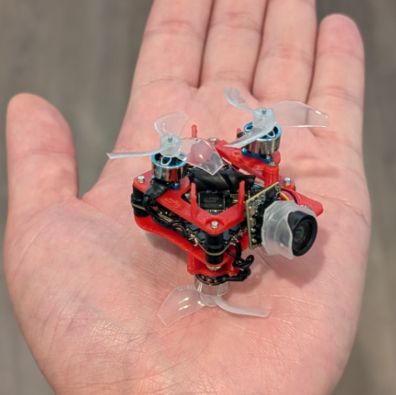First person view (FPV) quadcopter drones have become increasingly more capable over the years, as well as much smaller. The popular 65 mm format, as measured from hub to hub, is often considered to be about the smallest you can make an FPV drone without making serious compromises. Which is exactly why [Hoarder Sam] decided to make a smaller version that can fit inside a Pringles can, based on the electronics used in the popular Air65 quadcopter from BetaFPV.

The basic concept for this design is actually based on an older compact FPV drone design called the ‘bone drone’, so called for having two overlapping propellers on each end of the frame, thus creating a bone-like shape. The total hub-to-hub size of the converted Air65 drone ends up at a cool 22 mm, merely requiring a lot of fiddly assembly before the first test flights can commence. Which raises the question of just how cursed this design is when you actually try to fly with it.
Obviously the standard BetaFPV firmware wasn’t going to fly, so the next step was to modify many parameters using the Betaflight Configurator software, which unsurprisingly took a few tries. After this, the fully loaded drone with camera and battery pack, coming in at a whopping 25 grams, turns out to actually be very capable. Surprisingly, it flies not unlike an Air65 and has a similar flight time, losing only about 30 seconds of the typical three minutes.
With propellers sticking out at the top and bottom – with no propeller guards – it’s obviously a bit of a pain to launch and land. But considering what the donor Air65 went through to get to this stage, it’s honestly quite impressive that this extreme modification mostly seems to have altered its dimensions.
Continue reading “Making The Tiny Air65 Quadcopter Even Smaller”

















